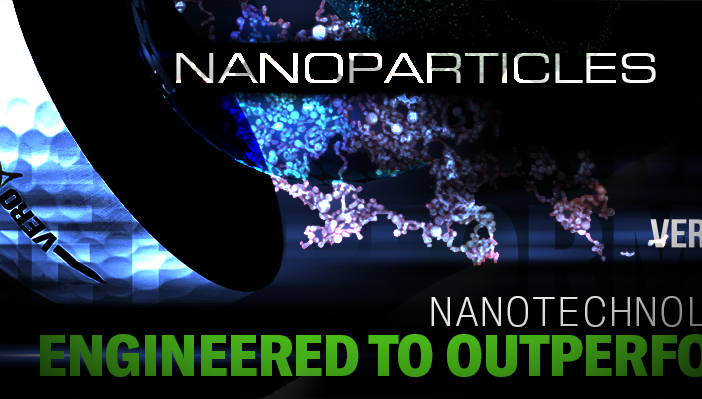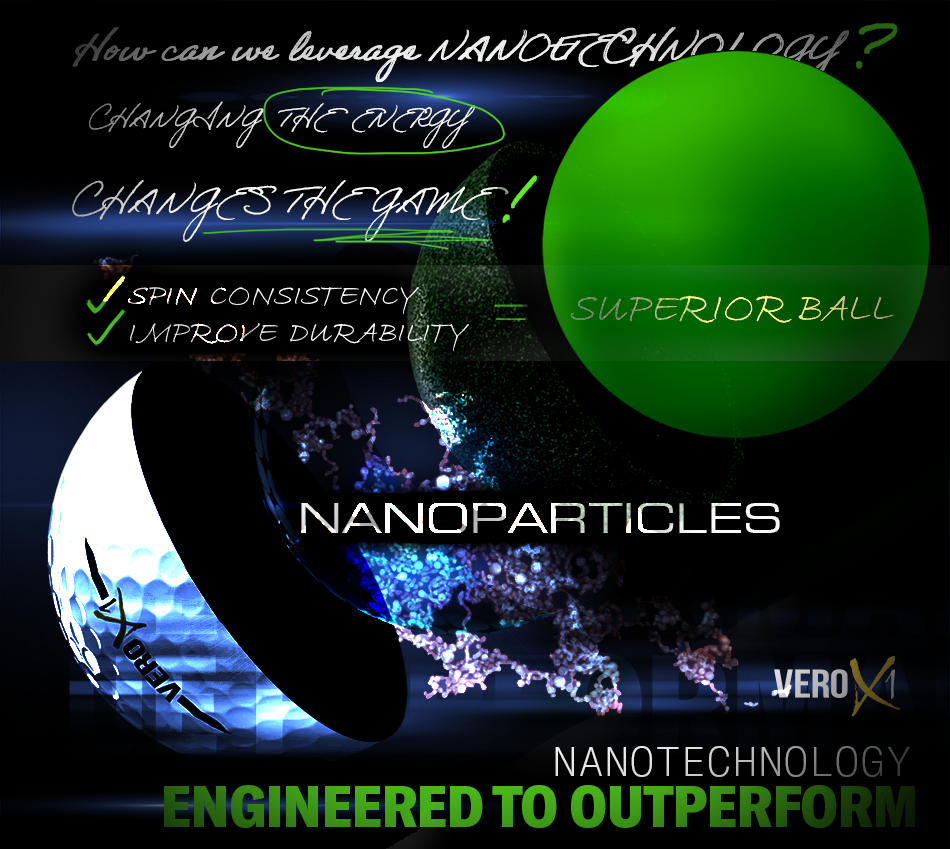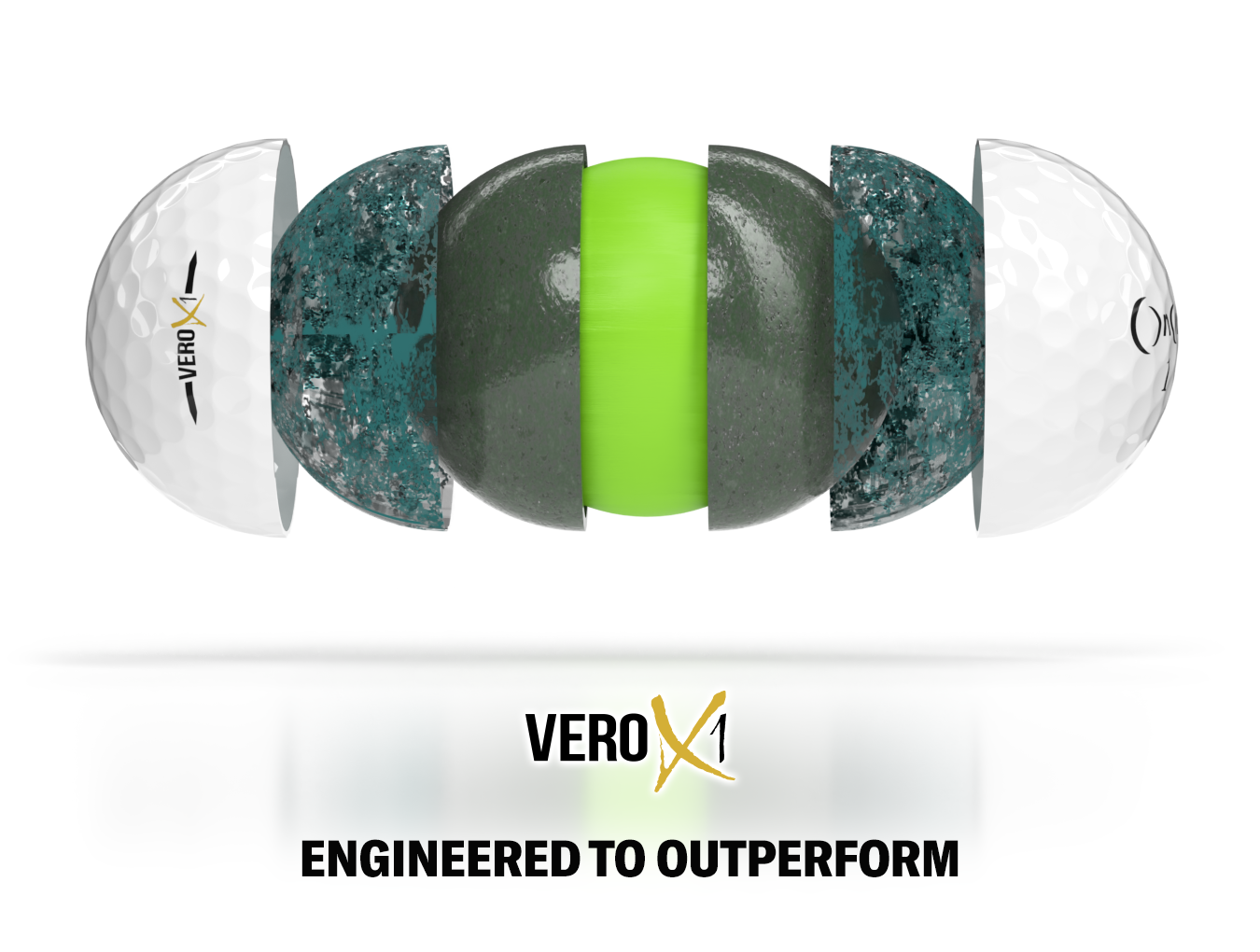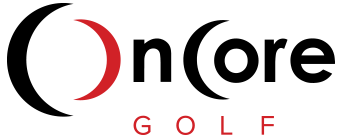
The term “four-piece” ball is often thrown around not only in industry speak but among serious golfers who understand golf ball layering. What exactly does that mean? It might be easier to think of pieces as layers, the same way you might envision a cross-section of the earth.
Take the VERO X1 for example, our four-piece (or four-layer), Tour-level ball. It starts with the core, which is the ball’s center mass, then the mantle encases the core. Next comes the nanolayer – a sheer, thin layer of nanoparticles distributed into and around the mantle. And finally, you have the cover (cast urethane), which is tightly bonded to the mantle due to the nanolayer.

Generally, four-piece balls – like OnCore’s VERO X1 and VERO X2 – are designed for players with driver swing speeds between 100 and 120 mph. They’re typically high compression – ranging from the mid-80s to the mid-90s – and require a lot of clubhead speed to maximize distance. But that’s another blog post for another day. Back to nanolayers …
So, what if you were to cut open the VERO X1? Would you be able to see all four layers, including the nanolayer, clearly? The answer is No. The core is visibly green and unmistakable, the mantle is the thin, detectable ring around it, and the cover … well, that’s what you always see. The nanolayer, however, would not be visible to the naked eye due to how thin it is.
OnCore Golf is a technology-driven company, and CEO Keith Blakely has a 40-plus-year background in nanoscience. OnCore’s Senior Technical Advisor, John Calabria, has worked with proprietary materials and layers throughout his highly-decorated career, including tenures with Titleist, TaylorMade and Maxfli.
So, it stands to reason that OnCore would deploy nanoscience to build a superior golf ball. That stated, what exactly does the nanolayer do? That’s where it gets interesting. The nanolayer directly affects the VERO X1’s spin characteristics by impacting the energy exchange between the cover and mantle. It provides spin consistency and improved ball durability throughout the range of shots encountered during a round of golf.

Nanotechnology – which deals with dimensions and tolerances of less than 100 nanometers – is used in all types of products to make them better: Energy, food, medicine, sunscreen, automobiles – the list goes on and on.
And via OnCore, it’s being applied to golf ball manufacturing for the first time in the history of the game.
Ready to find the perfect OnCore ball for your game? Take the next step with our Ball Fitting Assessment and get fit today!
WANT TO LEARN MORE?
Additional links:
What are Nanoparticles?
What are nanoparticles? definition, size, uses and properties. TWI. (n.d.). Retrieved August 2022, from https://www.twi-global.com/technical-knowledge/faqs/what-are-nanoparticles
Explore Nanotechnology
ScienceDaily. (n.d.). Nanotechnology. ScienceDaily. Retrieved August 2022, from https://www.sciencedaily.com/terms/nanotechnology.htm
Wikipedia: Nanoparticle
Wikimedia Foundation. (2022, August). Nanoparticle. Wikipedia. Retrieved August 2022, from https://en.wikipedia.org/wiki/Nanoparticle
SPECIAL ACCESS VIP
INTRODUCING CLUB ONCORE
We’ve launched Club OnCore! Join and become a club member today to get preferred pricing, free shipping, free customization, special offers and exclusive access to partner deals. Annual membership comes with your favorite award-winning golf balls at no cost, plus much more. Sign up today and enjoy the perks!




